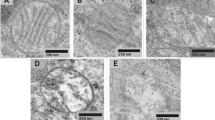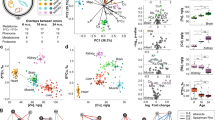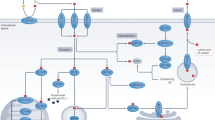Abstract
IT is well established that copper and molybdenum are reciprocally antagonistic in animal metabolism; but the causal mechanism is not known1. Zinc toxicity in the rat has been shown to deplete liver catalase and cytochrome oxidase, which were restored to normal levels by incorporating small amounts of copper sulphate in the diet2.
This is a preview of subscription content, access via your institution
Access options
Subscribe to this journal
Receive 51 print issues and online access
$199.00 per year
only $3.90 per issue
Buy this article
- Purchase on SpringerLink
- Instant access to full article PDF
Prices may be subject to local taxes which are calculated during checkout
Similar content being viewed by others
References
Marston, H. R., in “Copper Metabolism”, edited by McElroy, W. D., and Glass, B. (Johns Hopkins Univ. Press, 1950).
Van Reen, R., Arch. Biochem. Biophys., 46, 337 (1953).
Nicholas, D. J. D., J. Gen. Microbiol., 15, 470 (1956).
Nicholas, D. J. D., Analyst, 77, 629 (1952).
Nicholas, D. J. D., and Nason, A., J. Biol. Chem., 211, 183 (1954).
Nicholas, D. J. D., Nature, 178, 148 (1956).
Author information
Authors and Affiliations
Rights and permissions
About this article
Cite this article
COMMISSIONG, K., NICHOLAS, D. Effects of Molybdenum and Copper on some Enzymes in Neurospora . Nature 180, 555–556 (1957). https://doi.org/10.1038/180555a0
Issue date:
DOI: https://doi.org/10.1038/180555a0



